A helpful illustrated guide about Chess opposition
The King’s nature of only being able to advance in three squares (although there are eight in total) can lead to very interesting conditions. The King could not advance if three tiles in front. of it are covered
Such is the truth of “opposition, which is a situation in chess that unfolds when both kings are in front of each other. That is the topic of this article which I will be sharing my experience with.
As someone who implements opposition in endgames here is what I know:
An opposition is a situation in chess where two kings face each other in a file or rank. Both kings cannot advance, creating a mutual blockade that is used to outmaneuver an enemy King that is often the difference between a draw and a win
There are three types in total: Direct opposition, diagonal opposition, and distant opposition, which is used to outflank an opposing King while giving room to your own.
This is an important topic to understand since it will save you some endgames, endgames that can usually be won or drawn with basic knowledge on the opposition.
King’s Opposition
The basic idea of the opposition lies within the fact that the king can block another king from advancing further when facing each other.
As you can see below:
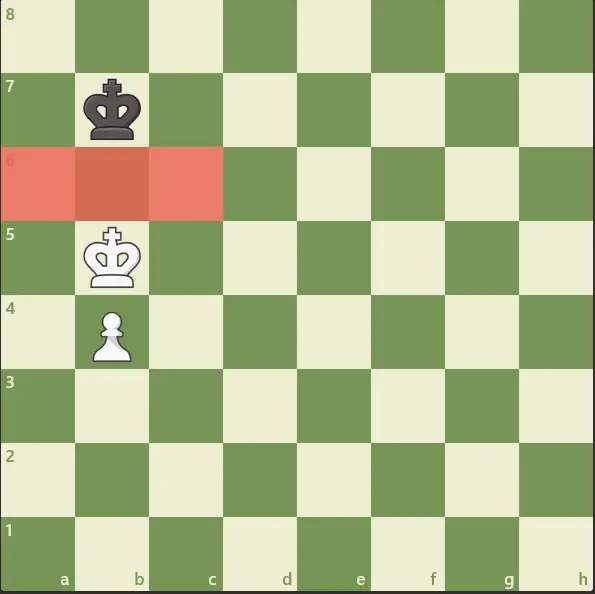
Both Kings in this case cannot head forward since their respective capture tiles are preventing each other from doing so.
The one not having to move in this case is said to have the “opposition” meaning they can continue to block the king’s advance.
It’s like a dance such as this one:
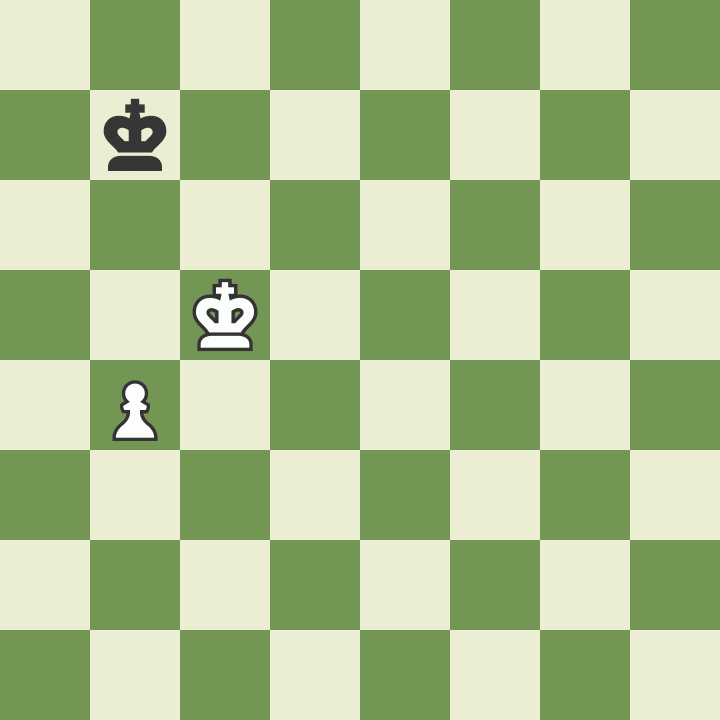
The reason why the one not obligated to move has the “opposition” is they can further decide to continue the blockade or not, unlike the one having to move.
Based on this idea, your own king can be a useful asset when preventing the opposing king from entering the position, especially in endgames.
Endgame tool
This principle is primarily applied in the endgame where the King has more roles to play, and is therefore active and worthy of being shut down.
Truthfully this is a concept that I’ve only learned now with researching this, and I’ve been playing chess for years!
And I’m not a bad player too, so ideas like this is might be what’s missing to make someone like me a complete player, and also someone like you!
Let’s talk about the first type, the direct opposition.
Direct opposition
The most common type of opposition and is by default what players usually mean when the address the term “opposition”.
It’s when both kings are only separated one tile from each other vertically (file), and horizontally (rank), which determines a fine line between a draw and a win.
Look at the diagram:
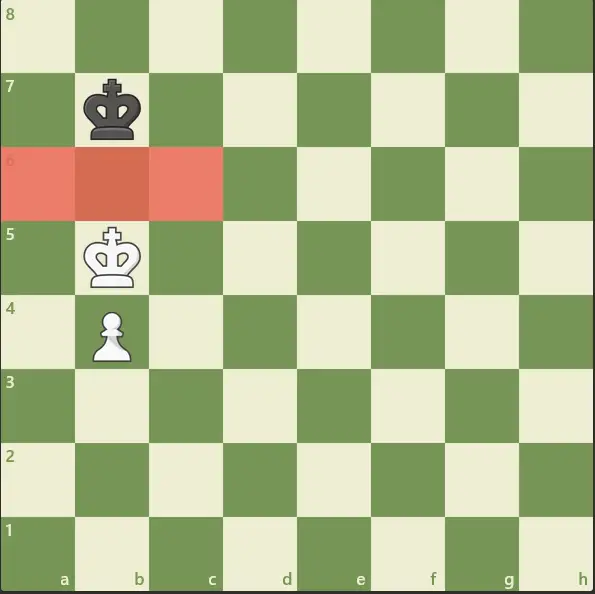
This is a direct opposition, if black is to move here then white has the “opposition” and therefore can choose to break or continue the blockade when black king moves.
This actually leads to a win for white:

To ensure a win in positions like this, avoid advancing the pawn when it can give a check (the pawn advanced here without a check), otherwise it’ll be a draw.
The other way around is interesting too, if white is to move then black has the “opposition” and can keep following the white King (just like earlier) to make a draw.
Again, you can see here:
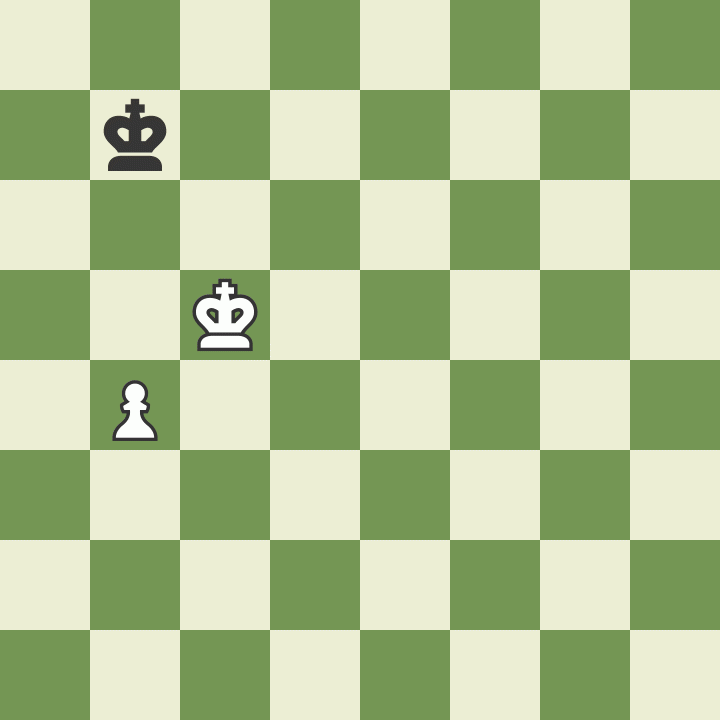
As you can see, the White King cannot leave the defense of the pawn since it needs to get escorted, while at the same time unable to advance due to the opposition.
Let’s practice what we have learned by applying it into an actual over the board game.
Svetozar Gligoriç vs Bobby Fisher 1959
This is a match between Svetozar Gligoriç (Strong Grandmaster) and Bobby Fischer (Future World Champion) which has the following position:

Familiar? Let’s take a lesson from an on-board decision made by the fisher (black).
If black tried to move here:

Then white just takes the opposition from earlier, where black is to move and therefore would lose:

But instead black played this:

This is a waiting move!
The game could continue like this:

Black can draw, and this is a draw since white is to move and therefore black can oppose the white king just like the sample from earlier.
Now let’s talk about the second type, the diagonal opposition.
Diagonal opposition
A diagonal opposition is basically just like the direct opposition, except the tile that separate the kings are in a diagonal rather than vertical (file) or horizontal (rank).
This kind of opposition is usually implemented when a direct opposition is not enough to push the other king away.
Just like on this one:

Black is to move in this position, therefore white has the opposition.
A direct opposition however is not enough to “outflank” the opposing king since the black pawn prevents the white King from advancing.
A diagonal opposition has to transpire on the board first, like this:
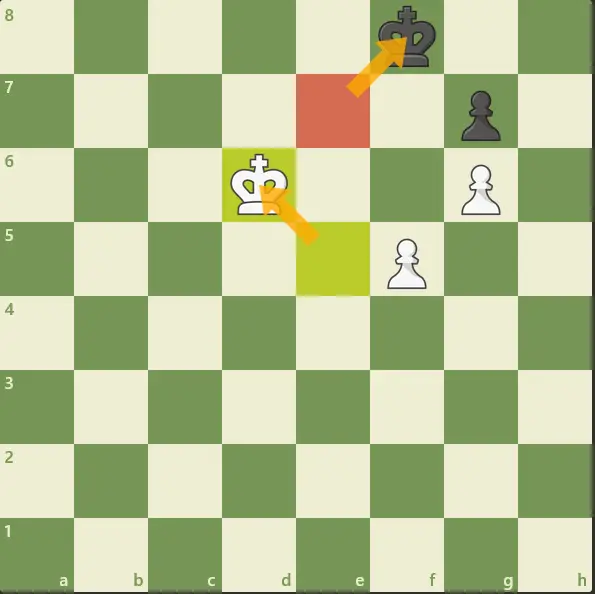
Of course other moves are possible, but those still leads to a win for white even with correct play, this is just the longest.
As you can see from the diagram an opposition has been created diagonally, where if white is to move then this is a draw.
But since black gets the play (it’s his turn) it would lead to this position:

An opposition! and this is a useful one since there are no longer any pawn that would prevent the white king from getting into the structure.
Again, black can prefer to deviate from this position (opposition) but is just losing nonetheless.
After this opposition has taken place, it’s only a matter time before the white king “outflank” the black king:
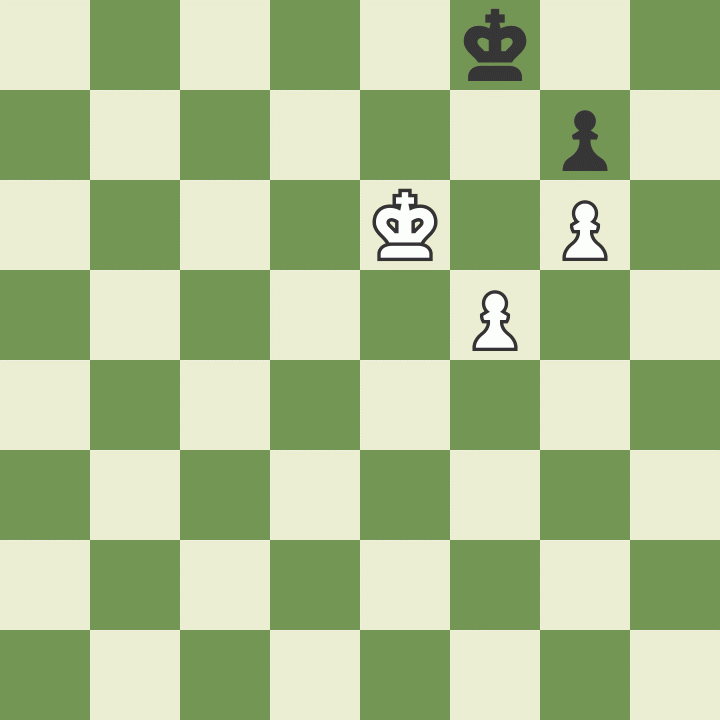
White wins using the diagonal opposition! now let’s get into the last type, the distant opposition.
Distant Opposition
The distant opposition is a mean to calculate from a distance which king will end up with the “opposition”.
The way to look at this is to identify the number of squares that separate both kings, where the player not having to move has the (distant) opposition when the position unfold.
Look at this:

This is a famous position from Capablanca’s study where there is an even (6) amount of squares between two kings.
Whoever to move here will make it so that there’s an odd number (5) of tiles and therefore will acquire the “distant opposition”.
Like this:

White moved making it so that there is an odd number of square (5) between the two kings.
The rule states that if there is an odd number of tiles, the king not having to move has the distant of opposition and therefore would win the direct opposition when the race gets completed.
Let’s speed things up here:

Now this is a direct opposition! and black is to move here, therefore white has the “opposition”.
But we know this four moves ago, since the distant opposition (a means to calculate who ends up in the direct opposition) tell us that white will get the direct opposition eventually.
It’s only a matter of time until white win one of the black pawns, giving room to promote one of his own:

It’s amazing how we can predict that white is winning from the start of this study just from having the distant opposition, I’m sure this is useful to you!
Endgames after all host all sorts of similar situations such as this one, it would be cool if you can apply this over the board.
Final thoughts
Getting the opposition allows the ability to “outflank” an opponent king while making yours pretty active, which easily becomes an important principle that every player should know.
This would expand your repertoire of properly trading pieces when predicting appropriate oppositional endgames , making conversions much easier.
In fact not just the opposition; endgame vision in general is probably the most important skill a player should polish.
Sleep well and play chess.
